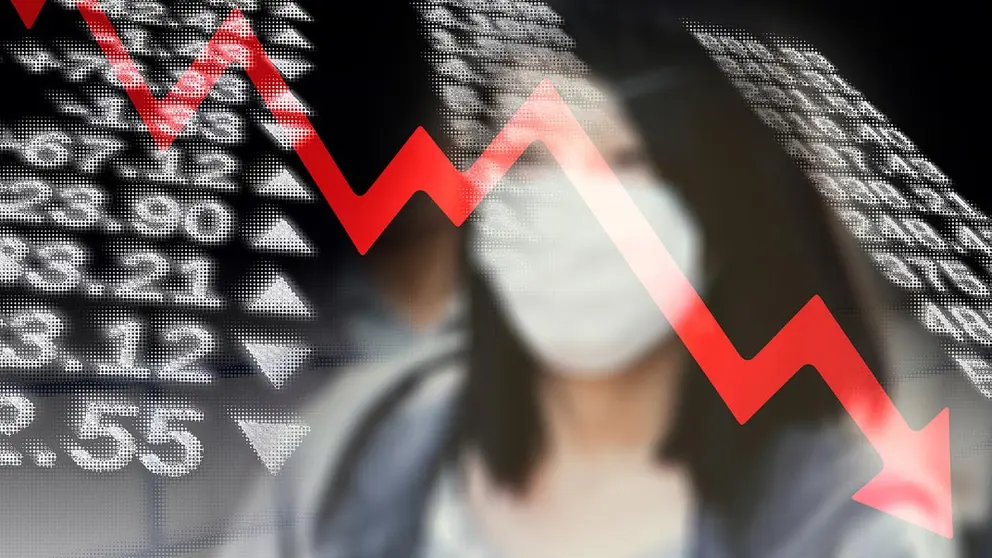Despite being one of the European countries least affected by the Covid-19 pandemic, Finland will also pay a high economic price.
The Finnish economy will shrink by 5.5% this year according to the forecast of the Ministry of Finance in its latest Economic Survey, published on Thursday 16 April. And this the best-case scenario, assuming that the restrictions on activity imposed by the Government lasted only 3 months. If they last half a year, the contraction of the GDP will be 12%.
Economic forecasts across the world have been upended by the coronavirus (koronavirus, in Finnish) pandemic and the measures taken to prevent the virus spreading. According to the Finnish Government, "the transformation has been unprecedented in its speed and scale."
3-month restrictions forecast
The forecast explains how the lockdown measures taken in Finland to prevent the spread of the virus are restricting movement and business activity, and this has serious consequences for economic growth.
The biggest drop in the country’s gross domestic product (GDP) will be in the second quarter of this year, after which the level of growth is expected to pick up. GDP is forecast to grow by 1.3% in 2021 and 2022.
The deficit in general government finances will rise this year by almost 14 billion euros to a total of 16.6 billion euros, or 7.2% of GDP. The foreseeable growth in the economy will not be enough to restore the general government budgetary position, and Finland’s general government finances will remain substantially in deficit in the coming years.
“Everything depends on how deeply the economy plunges and how long it stays there. The danger is that the longer the economy suffers, the greater the difficulty in reviving it,” says Mikko Spolander, Director General of the Economics Department at the Ministry of Finance.
Decline in exports and consumption
The sharp contraction in the Finnish economy is a result of the decline in global demand and in Finnish exports, and the restrictive measures taken by Finland to tackle the coronavirus epidemic.
The restrictive measures have the effect of reducing private consumption. This is particularly so in the case of services, but the consumption of goods is also affected. Least affected is the consumption of daily consumer goods.
The uncertain outlook also means investments are being rescheduled or put on hold entirely. Private investment will be down substantially.
Unemployment rate up to 8%
The number of people employed is falling as the global pandemic closes down business activity and shuts national borders. Employment in Finland in 2020 will be down, and the employment rate will fall to 71%. Correspondingly, the number of unemployed people will rise significantly, pushing the unemployment rate up to 8% for 2020.
In 2021–2022, the Finnish economy will return to its pre-crisis growth track. Although a crisis of short duration is not expected to weaken the economy’s production potential significantly, it will take time to make up for the production lost during the downturn period.
The growth in private consumption will return to normal and will follow the 1.5% growth track for real incomes. Private investment will recover more slowly due to postponements in major forest industry projects, and because investment in housing construction will decline further.
The decline in housing construction will come to an end in 2022, and this will be the biggest single factor supporting GDP growth that year. With economic growth accelerating and nominal earnings rising slightly, the demand for labour will gradually climb during 2021 and 2022. The employment rate will edge up to 72% in 2022.
Public finances weakened
General government finances in Finland will weaken substantially in 2020.
The steep decline in the economy will reduce tax revenue and increase unemployment expenditure. General government finances will also be hit by the measures taken to mitigate the effects of the coronavirus epidemic. The imbalance between revenue and expenditure will grow to 16.6 billion euros.
All general government sectors will be in deficit this year. Central government finances will be particularly hard hit, because of the downturn and the support measures.
There will also be further pressures on local government finances, which were already in a difficult position last year. For the first time ever, the social security funds will be in deficit. This is because benefit expenditure is rising due to the increase in unemployment and lay-offs and, at the same time, pension insurance contributions are temporarily lowered.
The general government deficit is expected to be smaller next year as the economy recovers and the temporary measures taken to mitigate the impacts of the coronavirus epidemic come to an end.
"However, there will not be a return to the pre-crisis level in general government finances," the Finance Ministry says. It is estimated that by 2024, general government finances will still be in deficit by well over EUR 9 billion.
The ratio of general government debt to GDP is rising sharply and will climb to nearly 70% this year. By 2024 the debt ratio may already be close to 80%.
Uncertainty surrounds forecasts
Government emphasized that an exceptional degree of uncertainty surrounds current forecasts, as assessments of the duration of COVID-19 mitigation measures change.
Moreover, estimates of the economic impact of the restrictions are also uncertain. In some sectors the restrictions have closed down business activity completely, while in others production continues or is even increasing. The current forecast is based to a greater extent than usual on assumptions about shifts in demand and supply.
The forecasting is also based on the assumption that the measures restricting economic activity will remain in place for three months. The further the virus spreads and the more people that are infected, and, in particular, the more extensive and long-term the restrictions are for containing the virus, the greater the negative impacts will be.
The Ministry of Finance estimates that for each month of restrictions at their present level the country's GDP will shrink by 1.5%–2.0%.
If the restrictions remain in place for a shorter period than forecast and the spread of the disease is brought to a stop, the impact will be less severe than in the forecast.
In an alternative calculation made alongside the forecast, the restrictions are assumed to last for six months. This would lead to a GDP shrinkage of 12% and a rise in the general government deficit to more than 10% of GDP this year.












